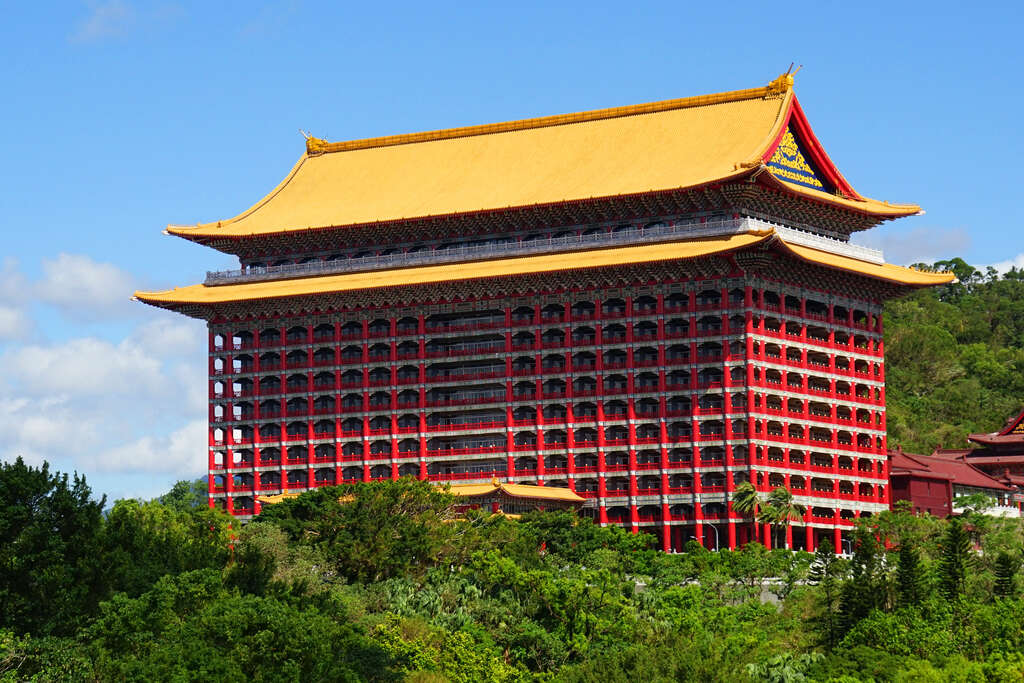Grand Hotel Taipei Introduction
The Grand Hotel, established in 1952, is a 14-story palace-shaped building majestically located at the foothills of Yuanshan Mountain, facing the Keelung River to the front, leaning against Yangming Mountain at the back, overlooking Songshan to the east, and gazing at Tamsui to the west. The hotel's magnificent exterior, featuring red pillars and golden tiles, highlights the grand classical atmosphere and conveys the beauty of Chinese art, making it one of the iconic landmarks of Taipei known worldwide. It is the best choice for both overseas visitors and business meetings. The beauty of Yuanshan lies in its majestic Chinese architecture and splendid classical elegance, while its mystery is rooted in its legendary historical colors and tales of secret passages. The tranquility and serenity of Yuanshan come from its distance from the hustle and bustle, and its proximity to leisurely and elegant scenic routes. The century-old Golden Dragon was originally a bronze dragon placed in front of the Taiwan Shrine, and its original form was specially preserved during the expansion of the Grand Hotel, perfectly displayed in the Golden Dragon Restaurant. During the renovation in its 76th year, it was plated with 24K gold. Notably, this coiled dragon has three claws, unlike the traditional four or five-clawed dragons of China. In the center of the Grand Hotel lobby's ceiling, there is a plum blossom-shaped coffered ceiling, with five golden dragons surrounding a pearl, symbolizing “Five Blessings Arrive at the Door.” Although there are 23 golden dragons and 16 phoenixes surrounding the coffered ceiling, the number "3" sounds like "sheng," meaning to rise, while "16" accompanied the big plum blossom "fa," implying prosperity; the plum blossom coffered ceiling symbolizes the harmony of dragons and phoenixes, carrying profound significance. The flying eaves and brackets of the roof express ancient Chinese civilization. The row of crouching beasts above the ridge rests on the extended flying eaves, while the chiling, a type of tile ornament depicting a beast, is placed between the main ridge and the descending ridge. Below the roof, the luxurious yet delicately strong bracket structure is one of the most remarkable aspects of Chinese architecture. The large floor-to-ceiling glass windows at the main entrance of the Grand Hotel are elegant and upright, but a closer look at the patterns on the door reveals six ancient characters hidden within: "Long live the Republic of China." This reflects the temporal background during the reconstruction of the Grand Hotel, showcasing the transition of time and the designer's ingenuity. At the stone steps entrance of the Shigantang Paifang, a large stone tablet stands, inscribed with four vigorous characters "Jiantan Victory Site" in cursive script by Mr. Yu Youren. After thorough verification, these four characters express that the entire Yuanshan is a sacred place, which has helped maintain the esteemed status of Yuanshan for over a century.




























